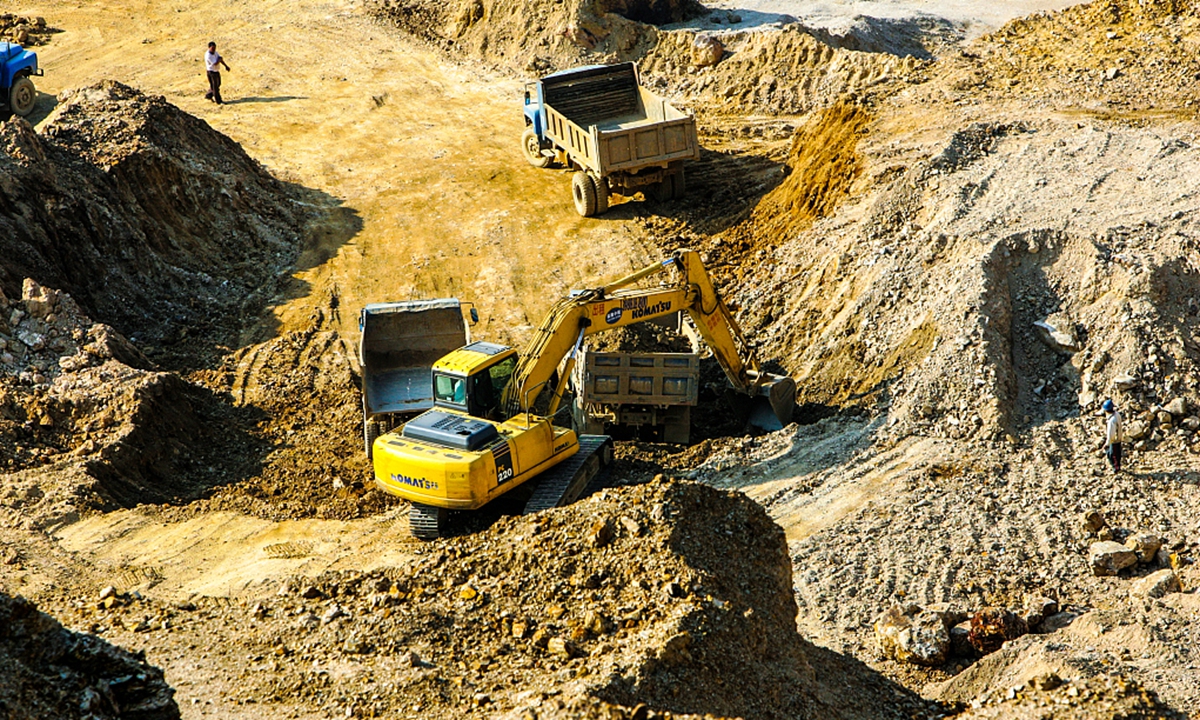
rare earth Photo:VCG
China has set a quota for the first batch of rare-earth mining in 2022 at 100,800 tons, up by about 20 percent compared with the level of last year, with a quota for smelting and separation at 97,200 tons, also up from the 81,000 tons in 2021.
Quotas for the first half of 2021 were earlier set at 84,000 tons for mining and 81,000 tons for smelting and separation.
“The 20 percent jump was mainly due to China’s surging demand for neodymium magnets, also known as Nd-FeB magnets, amid the new energy push in the country,” Wu Chenhui, an independent industrial analyst, told the Global Times on Friday.
Nd-FeB magnets are mainly used in wind power generation, new energy vehicles and frequency conversion home appliances.
According to a statement from China’s Ministry of Industry and Information Technology (MIIT) and the Ministry of Natural Resources on Friday, the mining quotas will be shared among the country’s four main producers.
The newly established China Rare Earth Group Co – an industrial conglomerate formed through the merging of several key producers of the key mineral resources – accounted for 36,906 tons and 34,680 tons of the mining and smelting quotas.
The China Rare Earth Group Co was officially set up in December last year, with permission from the State Council, China’s cabinet. The move was praised by industry experts as showing China's determination not to squander rare earth materials anymore and instead use the minerals more in strategic industries such as semiconductors and electric cars.
The new company will be controlled by the State-owned Assets Supervision and Administration Commission (SASAC). Industry insiders estimate the new company will control around 70 percent of China's heavy rare-earth minerals.
The merger also comes after the Biden administration in recent months hyped the "risks of China's threat to US supply chains," along with calls to prioritize rare-earth supply as one of their climate and technological policies.
China provides more than 85 percent of the world's rare earths and is home to about two-thirds of the global supply of scarce metals and minerals, according to a report by US think tank the Center for Strategic and International Studies.




